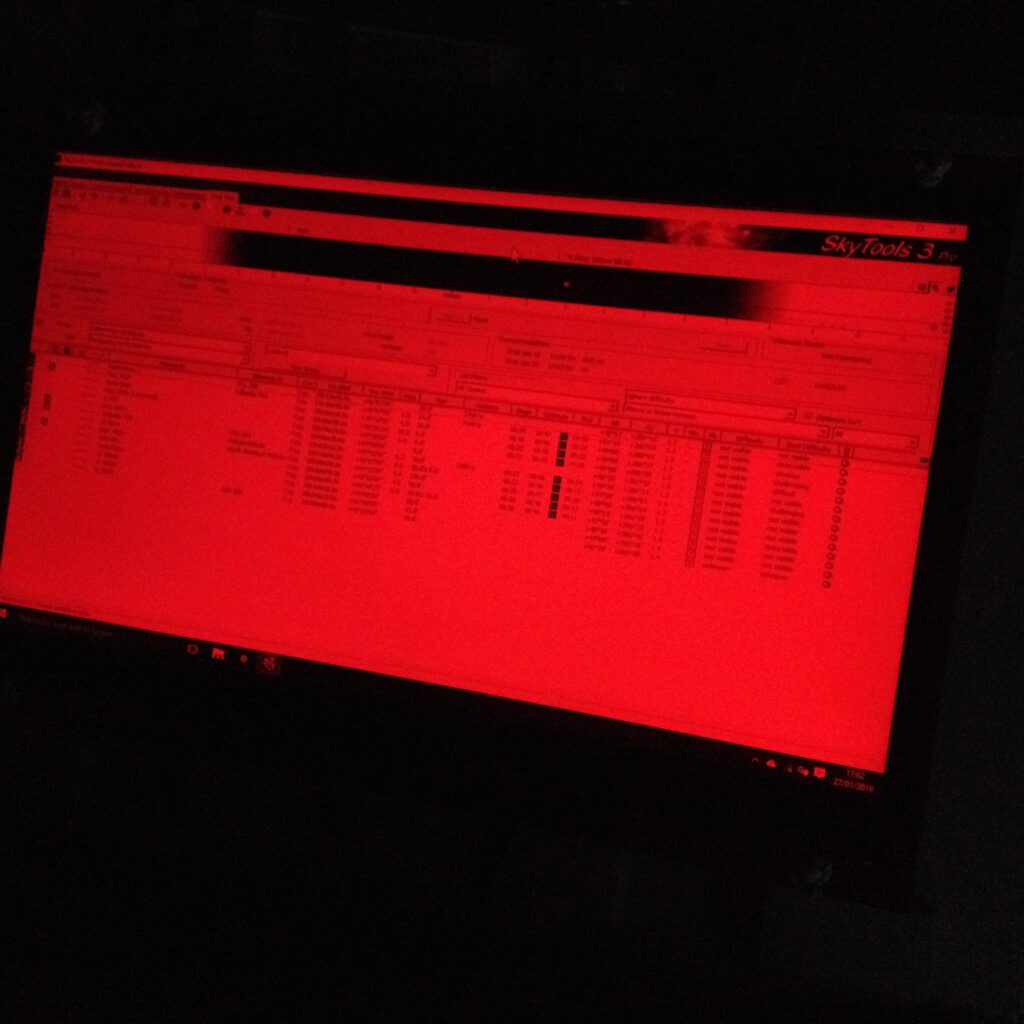To put it quite frankly, the weather recently has been crap. Apart from one clear night on the 31st, December, where it looked pretty good until the point we got back from a New Year’s party, I’ve not had one clear observing night since the end of October 🙁
2015 felt like a disappointing year for observations. The awful weather during the Spring and a rather lack lustre Summer wasn’t looking too promising on making much headway into my various observing programmes. Fortunately a run of clear nights in late September through to the end of October improved the count by 23% over 2014, with a total of 90 unique object observations.
Astroplanner produces charts for all sorts of useful stats for the year – Like Wednesday’s produced more observations than any other day of the week, or that my 14mm Delos and 40mm Meade eyepieces account for the lions share of views made through the scope, or that 43% of observations are made in ‘Mostly Stable’ seeing conditions.

Apart from a few early observations where I didn’t make a written record of the observation, my Messier Observing programme is essentially complete.
The Collinder Clusters programme is 28% complete for those objects that will ever be above the horizon from my location.
The Caroline Herschel List is still short of one object – NGC253 – short of being completed.
The Caldwell programme is 32% complete, again for those objects that will ever be above the horizon from my location.
With all these projects well under way now, I fancy having a bash at Chuck Wood’s Lunar 100. I seem to get enough clear nights where the Moon is bright enough to make Galaxy or nebulae observation a waste of time, but would rather not waste the opportunity to do something useful at the same time.
I’ve acquired the full multi DVD set for Sky and Telescope magazine from 1941 onwards, which contains Chuck Wood’s ‘Exploring the Moon’ series of articles describing all of the Lunar 100 objects, as well as many other articles on Lunar geology. I think this should make for an educational and interesting interlude as well as something a little different to observe. This, with a list of progress, of my various other observing projects can be found in the Astronomy/ Observing Programmes section of the menu.
The observatory has undergone an upgrade with the installation of a new PC. The old one dates back to about 2007 and was becoming rather slow, despite still running XP with all the updates turned off. Apart from a motherboard replacement a few years back, the machine had been bomb-proof reliable and I have a feeling that its Windows 10 powered replacement might bite me in the arse with all of it’s horrendous sized updates which cannot be turned off. If it does, there is always Windows 7 should the need arise.

The other change is a 5mm thick piece of Red Perspex over the monitor. This must be the most effective way of preserving night vision there is. In the past I have tried all sorts of apps that reduce screen brightness, or change the overriding colour scheme to Red, but all basically pump out far too many lumens. This £14.00 of colour plastic has changed everything. The monitor in daylight is unreadable, but in the dark, it’s easy to read and you feel that your eyeballs aren’t being sucked out of your head every time you look at the screen. While you have to be aware that red text is unreadable unless it’s on a dark background, it’s easy enough to configure both Astroplanner and my now favourite Skytools 3, so that all menus and text are easy to read when everything is tinted Red. Most of the light in the observatory is now coming from the illuminated keyboard, but as I can turn this off when not typing, it isn’t too much of a problem.
Let’s hope the weather is 2016 is better than last year, but so far, all we have had are high winds and more rain than you can shake a stick at!!